- KyotoKimonoShop
- Kyoto
- 0 likes
- 1771 views
- 0 comments
Sanmyō-in 三明院: An Autumnal Treasure of Kyoto
Introduction: An Oasis of Calm in the Bustling City
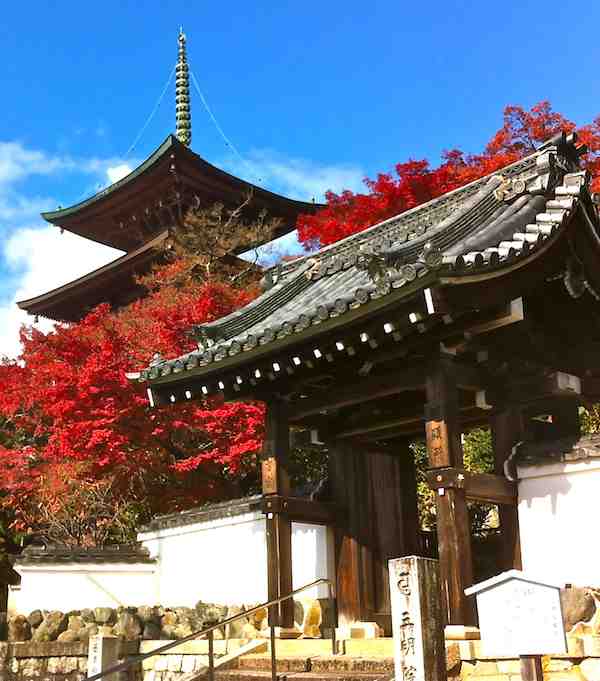 Nestled in a peaceful corner of Kyoto, Sanmyō-in temple stands as a sanctuary of tranquility, far from the hustle and bustle of modern urban life. Our morning visit on November 21, 2023, unveiled a world where time seems to stand still, and where nature and spirituality harmoniously intersect. The Koyo red maples, symbols of the Japanese autumn, offer a captivating spectacle of vibrant colors, enchanting all who tread this sacred ground.
Nestled in a peaceful corner of Kyoto, Sanmyō-in temple stands as a sanctuary of tranquility, far from the hustle and bustle of modern urban life. Our morning visit on November 21, 2023, unveiled a world where time seems to stand still, and where nature and spirituality harmoniously intersect. The Koyo red maples, symbols of the Japanese autumn, offer a captivating spectacle of vibrant colors, enchanting all who tread this sacred ground.
A Journey Through Time: The History of Sanmyō-in
To fully appreciate the significance of Sanmyō-in, it's essential to delve into its rich and complex history. Founded in 1906 by the monk Satake Nobumitsu, the temple is an important link in the Shingon tradition of Japanese Buddhism. This section will detail the temple's history, its connections to Shingon Buddhism, and its significance in the cultural and spiritual context of Kyoto.
The Founders and Guardians of the Temple
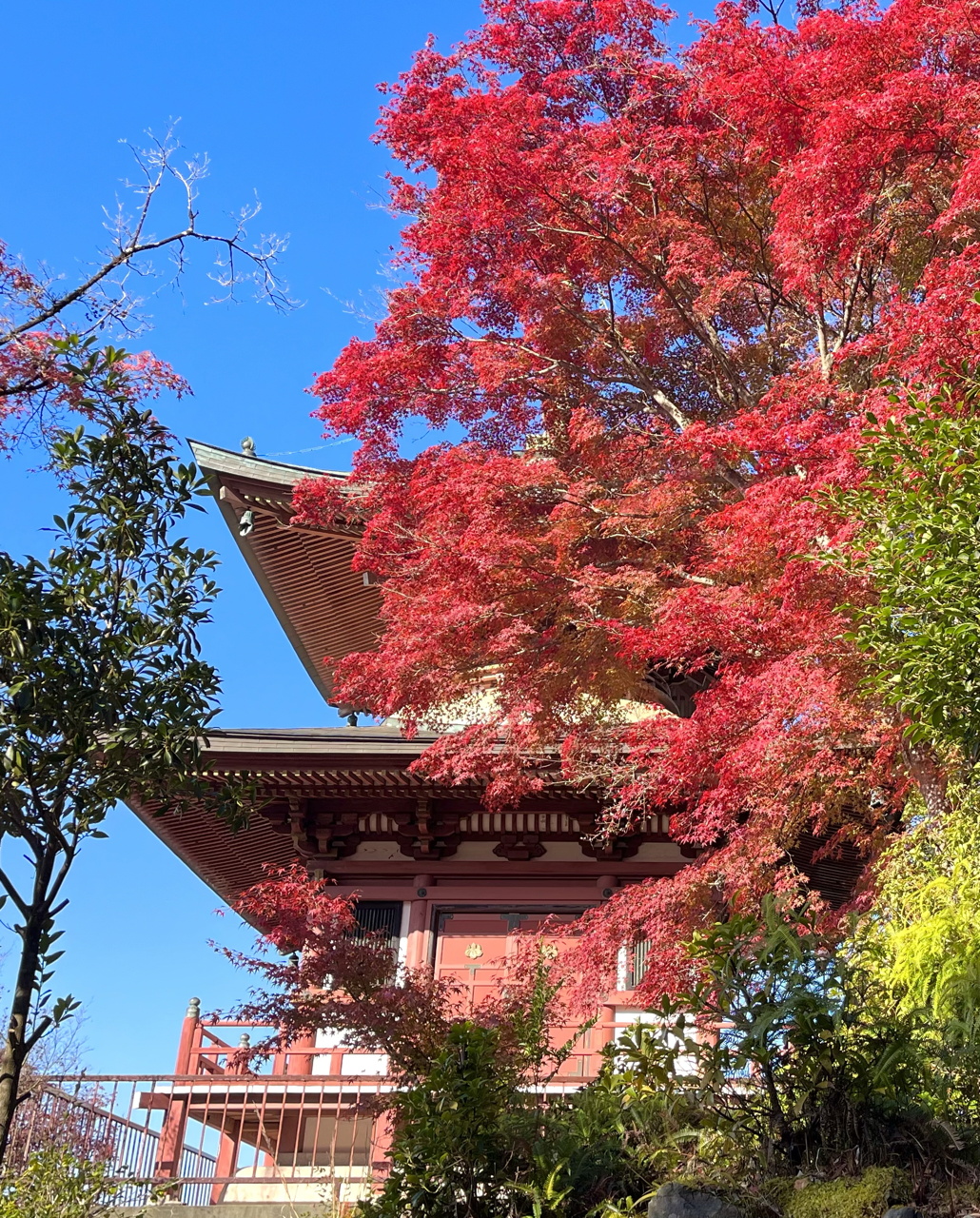 The foundation of Sanmyō-in by Satake Nobumitsu marks only the beginning of its story. Each generation of monks has made their own contributions, shaping the temple as we know it today. This section will explore key figures in the temple's history, including the Sixth Saint, Satake Toshiaki, and their impact on the development and preservation of Sanmyō-in.
The foundation of Sanmyō-in by Satake Nobumitsu marks only the beginning of its story. Each generation of monks has made their own contributions, shaping the temple as we know it today. This section will explore key figures in the temple's history, including the Sixth Saint, Satake Toshiaki, and their impact on the development and preservation of Sanmyō-in.
Over the centuries, Sanmyō-in has witnessed numerous changes, both in its structure and spiritual practices. The monks, as guardians of this heritage, have played a crucial role in transmitting the teachings and rituals of the Shingon sect. They have also been the craftsmen of the conservation of the temple's art and architecture, ensuring that every element, from statues to wall paintings, reflects the depth and richness of Buddhist tradition.
Among these emblematic figures, the Sixth Saint, Satake Toshiaki, stands out for his dedication to preserving the essence of Sanmyō-in. Under his guidance, the temple not only maintained its traditions but also integrated new practices and celebrations, thereby enriching its cultural and spiritual heritage.
This section will shed light on the role of these guardians in perpetuating the history of Sanmyō-in, highlighting how their wisdom and leadership have enabled the temple to transcend time while remaining a pillar of the Buddhist community. By exploring their stories and contributions, we will discover how Sanmyō-in continues to shine as a symbol of peace, spirituality, and timeless beauty.
Architecture: A Blend of Tradition and Ren
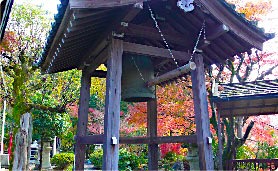 The architecture of Sanmyō-in is a fascinating mix of traditional styles and innovations. From the reconstruction of the main building in 1938 to the addition of the two-story pagoda in 1961, each architectural phase tells a story. This section will offer a detailed description of the temple's architecture, highlighting how each element reflects the beliefs and traditions of Shingon Mikkyo Buddhism.
The architecture of Sanmyō-in is a fascinating mix of traditional styles and innovations. From the reconstruction of the main building in 1938 to the addition of the two-story pagoda in 1961, each architectural phase tells a story. This section will offer a detailed description of the temple's architecture, highlighting how each element reflects the beliefs and traditions of Shingon Mikkyo Buddhism.
The main building, rebuilt in the traditional Japanese architectural style, embodies the perfect fusion of old and new. Its clean lines and wooden structure showcase Japanese craftsmanship, while subtle details, such as carvings and ornaments, reflect the profound influence of Shingon Buddhism. The two-story pagoda, added later, is an architectural masterpiece. With its unique shape and intricate details, it symbolizes the quest for enlightenment in esoteric Buddhism.
Inside the temple, Buddhist art and iconography create an environment conducive to meditation and spiritual reflection. The wall frescoes, deity statues, and sacred mandalas are not just works of art but also tools for meditation and teaching. Each architectural and artistic element of Sanmyō-in is imbued with spiritual meanings, inviting visitors on an inner journey towards peace and wisdom.
Wandering through the temple, one also discovers carefully landscaped gardens, reflecting the Zen philosophy of harmony with nature. These green spaces, with their peaceful ponds and stone arrangements, offer a haven of tranquility and a deep connection to the natural world.
In summary, the architecture of Sanmyō-in is a living testament to Japan's rich cultural and spiritual heritage. Every stone, beam, and artwork tells a part of the sacred site's story, making Sanmyō-in a must-visit for those seeking to understand the depth and beauty of Japanese Buddhism
The Deities of Sanmyō-in: A Hidden Pantheon
 .png)
Kōbō-Daishi, also known as Kūkai, is the founder of the Shingon school of Japanese Buddhism. His statue, often placed at the center of the temple, symbolizes teaching and wisdom. He is revered not only as a great spiritual master but also as a protector and guide for the faithful.
Fudō Myō-ō, another major deity of Sanmyō-in, is depicted as a fierce warrior. He embodies the determination and strength needed to overcome obstacles and illusions. His presence in the temple reminds the faithful of the need to remain resolute in their spiritual quest.
Kangiten, often represented as an embracing couple, symbolizes harmony and compassion. This unique deity is particularly revered for its ability to bring peace and resolve conflicts. In the context of Sanmyō-in, Kangiten represents the union of opposites and the balance necessary for spiritual realization.

These deities are not just objects of worship; they embody the fundamental principles of Shingon Buddhism. Their teachings and symbolism are integrated into the rituals and meditations practiced at the temple. Devotees and visitors are encouraged to reflect on these teachings, allowing for a deeper and more meaningful spiritual experience.
In summary, the deities of Sanmyō-in are not just religious icons; they are spiritual guides that enrich Buddhist practice and assist the faithful in navigating the path to enlightenment. Their discreet yet powerful presence makes Sanmyō-in a unique and profoundly inspiring place of worship.
The Red Maples of Sanmyō-in: A Natural Spectacle
The red maples, over 100 years old, are the main attraction of Sanmyō-in in autumn. This section will describe these magnificent trees in detail, their life cycle, and the cultural and spiritual significance of the red maple leaves (Koyo) in Japanese culture.
The Tahōtō Pagoda: A Symbol of Serenity
The two-story Tahōtō pagoda of the temple, with its unique stupa form, is a strong symbol of esoteric Buddhist tradition. This part will provide an in-depth analysis of the pagoda, from its architectural design to its spiritual significance, and its role in the landscape of Sanmyō-in
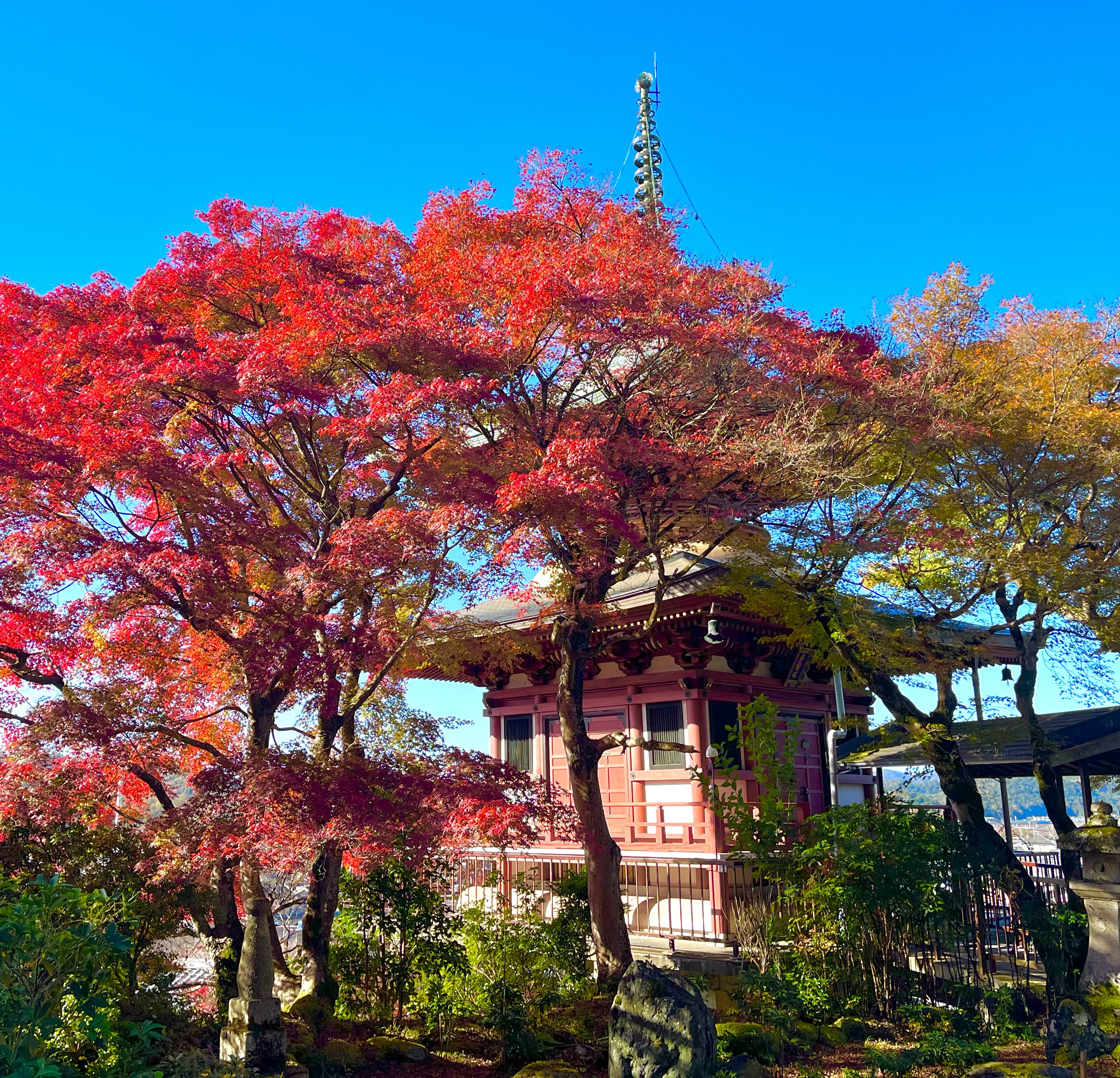 A Path to Serenity: The Journey to the Templethe path leading to Sanmyō-in, starting
A Path to Serenity: The Journey to the Templethe path leading to Sanmyō-in, starting 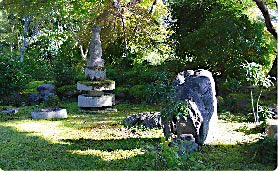 from the Miyake Hachiman shrine, is an experience in itself. This section will guide the reader along this path, describing the sights, sounds, and sensations that accompany this journey to the temple.
from the Miyake Hachiman shrine, is an experience in itself. This section will guide the reader along this path, describing the sights, sounds, and sensations that accompany this journey to the temple.
A Memorable Morning Visit: Personal Experience
Our photos taken at 9:21 capture a rare moment of tranquility. This part will be a personal account of our visit, describing the peaceful atmosphere of the temple, the sounds of nature, and the emotions experienced during this unique morning experience.
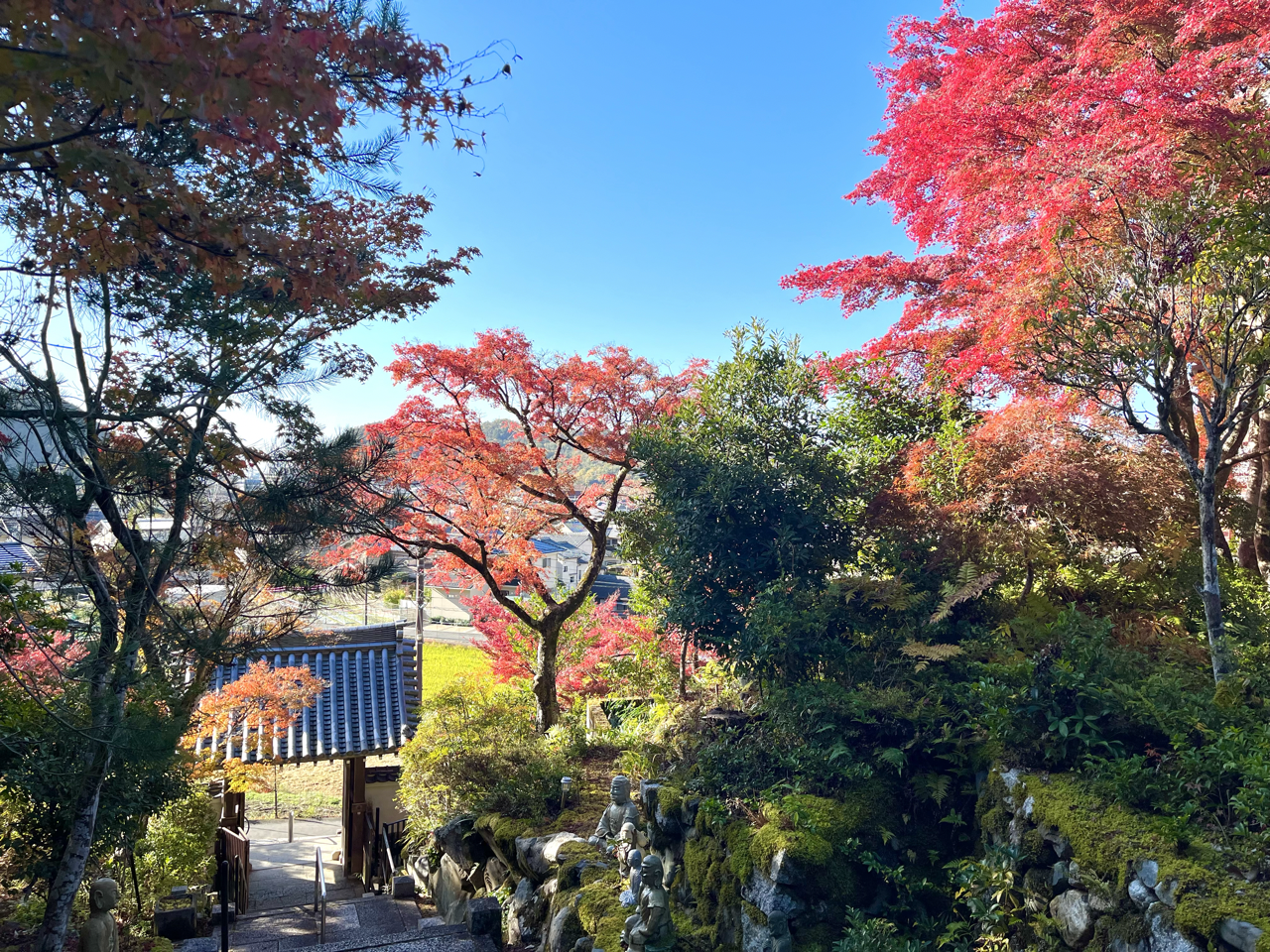
Access to the Temple: Tips and Routes
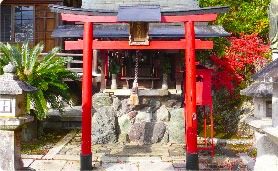 Reaching Sanmyō-in can be an adventure in itself. This section will offer practical advice on how to access the temple, avoiding the pitfalls of usual tourist routes and preferring a more authentic and picturesque approach.
Reaching Sanmyō-in can be an adventure in itself. This section will offer practical advice on how to access the temple, avoiding the pitfalls of usual tourist routes and preferring a more authentic and picturesque approach.
Conclusion: Sanmyō-in, An Unrecognized Gem of Kyoto
Sanmyō-in, with its red maples, Zen garden, daruma statuettes, and Tahōtō pagoda, is an unrecognized haven of peace. This section will summarize the temple visit experience, highlighting its autumnal beauty and serene ambiance, and inviting readers to discover this unique place.

Comments (0)